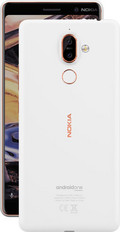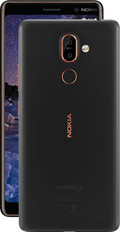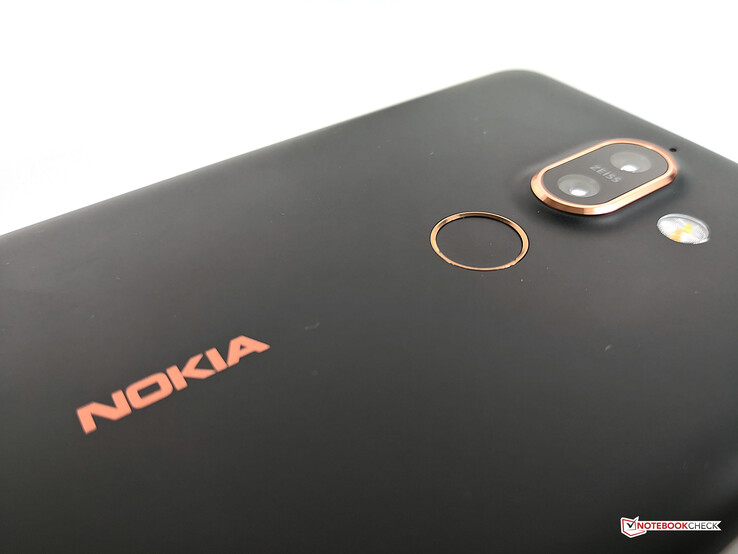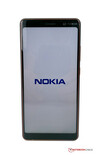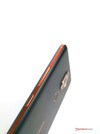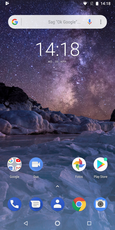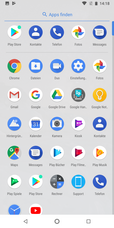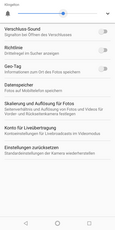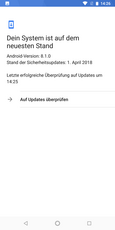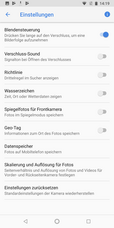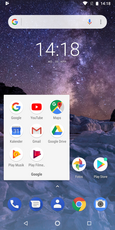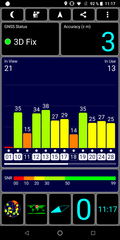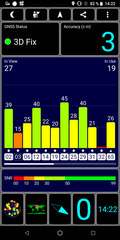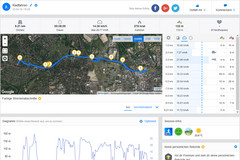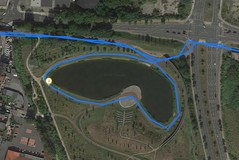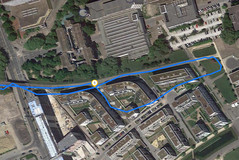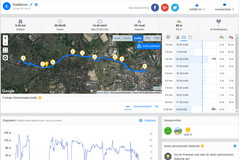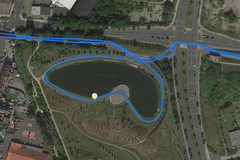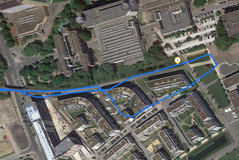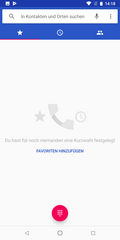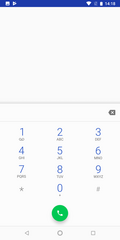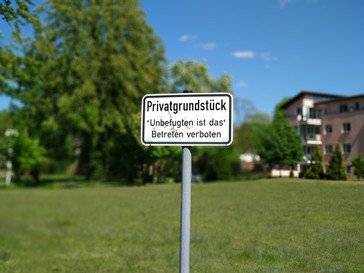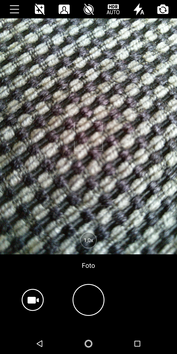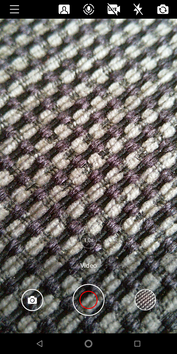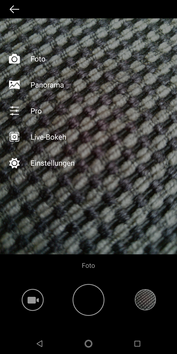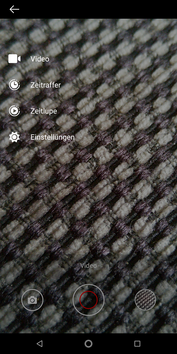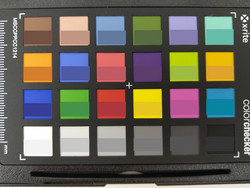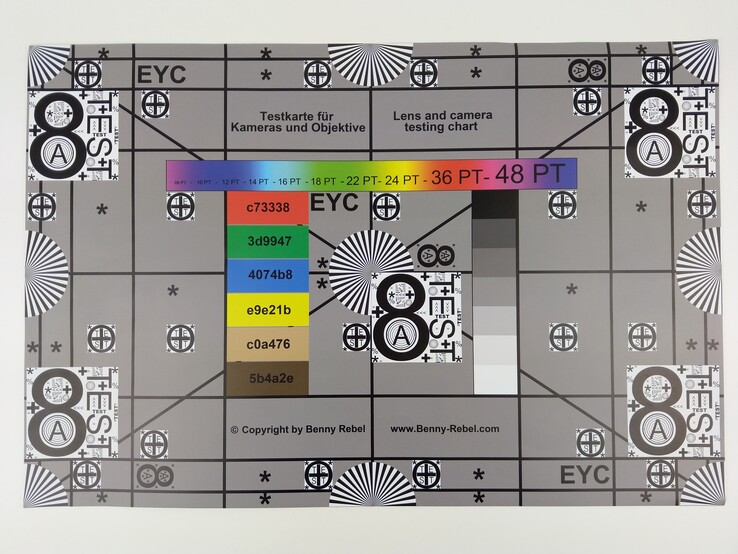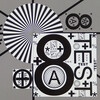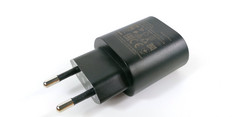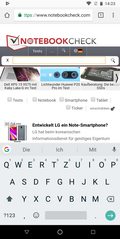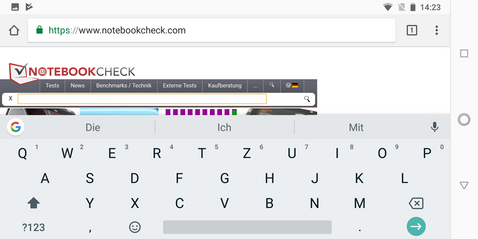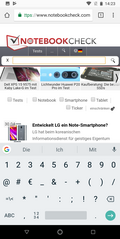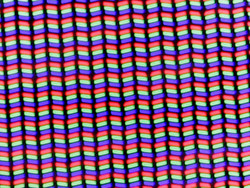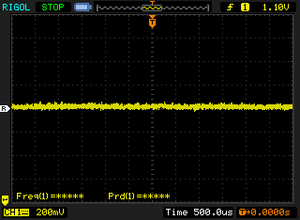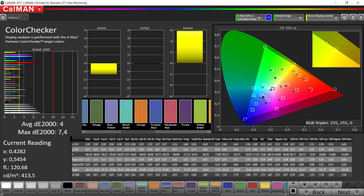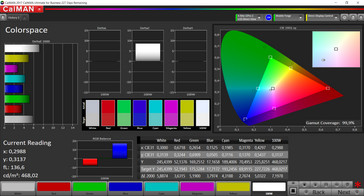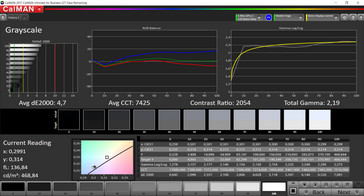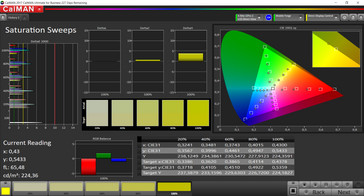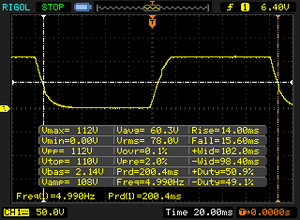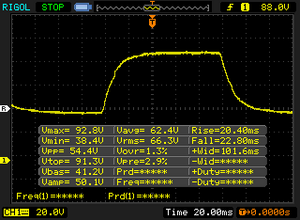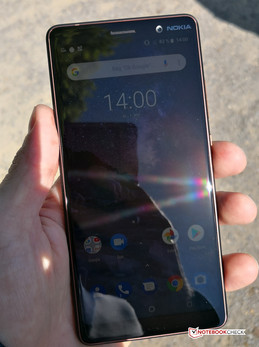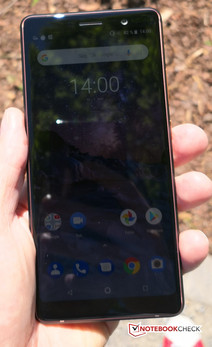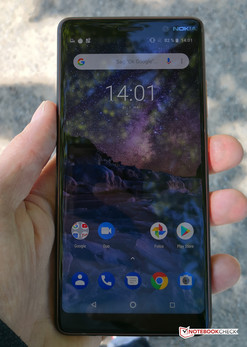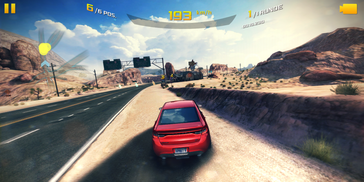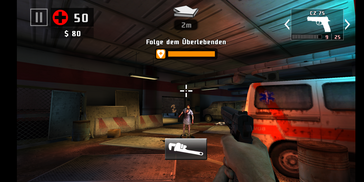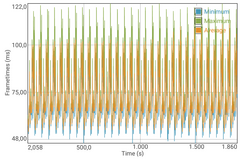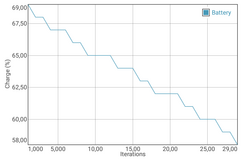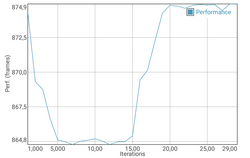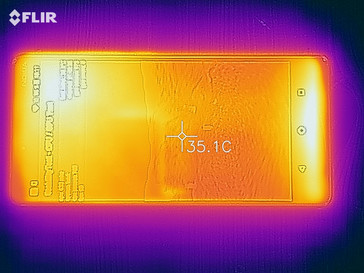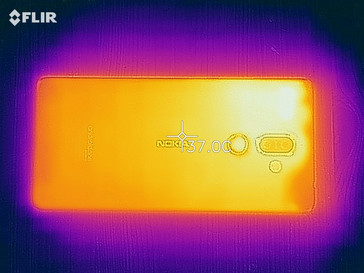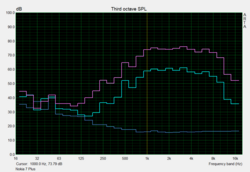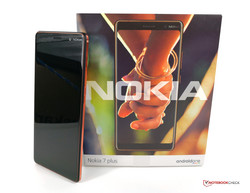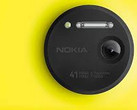Nokia 7 Plus Smartphone Review
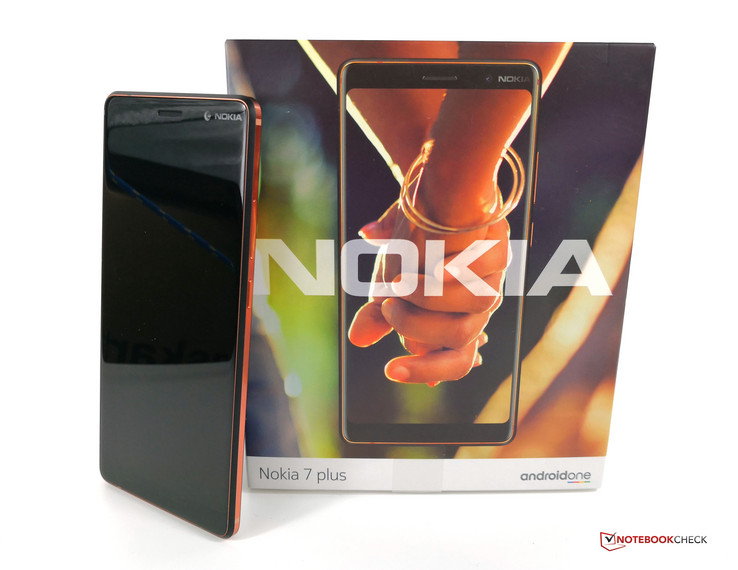
During this year’s Mobile World Congress (2018) in Barcelona, Nokia, which is now owned by the Finnish company HMD Global, presented the Nokia 7 Plus. The mid-range smartphone features a 6-inch, 2160x1080 IPS display with an 18:9 aspect ratio and is powered by the new mid-range processor from Qualcomm, the Snapdragon 660. In addition, the Nokia smartphone has 4 GB of LPDDR4 RAM and 64 GB of expandable storage.
The rear dual-camera module, which enables optical zoom, consists of a 12 MP as well as a 13 MP sensor and is adorned with the word Zeiss (the name of the German manufacturer of optical systems).
The new mid-range dual-SIM device from Nokia is currently available for about 380 Euros (~$447). The main competitors of the Nokia 7 Plus include: The Sony Xperia XA2 Ultra, the Wiko WIM, the Samsung Galaxy A8 (2018), the OnePlus 5T as well as the Asus ZenFone 4 Selfie Pro ZD552KL. For 50/100 Euros (~$58/117) more, you can get the Samsung Galaxy S8.
Case - The smartphone from Nokia is a real looker
The 186-gram Nokia smartphone is available in two color schemes: “Black Copper” and “White Copper”. The front of the smartphone consists of scratch-resistant Corning Gorilla Glass 3. The slightly rounded sides are composed of metal.
Visually, the Nokia 7 Plus leaves a very positive impression. The ornamental elements as well as the glossy copper-colored sides make the device seem very noble. In addition, the build quality of the Nokia 7 Plus is just as good as those of other modern high-end smartphones.
The case, which was crafted from a 6000 series solid aluminum block, does not prove to be very ergonomic in the hand. The machined metal sides are very angular and therefore feel jarring when compared to the smooth curves of the 2.5 D glass on the front and the back. The back of the device is coated with plastic, which makes it very grippy and very resistant to fingerprints. However, because of this, the smartphone loses a little bit of value, because this coating feels quite “plasticky” to the touch.
The IPS display has very thin bezels. However, it cannot compete with the bezel-less design of other smartphones from 2018. This is reflected in the screen-to-body ratio of “only” 77.6%. However, this result is quite normal in this price range.
The physical buttons on the right side offer a very good actuation point. In addition, both the volume rocker and the power button are set very firmly in the frame, and therefore they do not exhibit any wobbling.
Follow-up: HMD Global has confirmed that the back has a ceramic coating.
Connectivity
The device offers 64 GB of internal eMMC memory. However, only 48.2 GB is available to the user. In addition, the storage space can be expanded with the help of a MicroSD card. The integrated MicroSD card reader supports SDHC as well as SDXC cards and can utilize SD cards with a capacity of up to 256 GB. However, internal and external storage cannot be linked together.
The mid-range smartphone has a USB Type-C port on the bottom of the device. However, this port only operates at USB 2.0 speeds. You can connect peripheral devices such as external keyboards or USB drives to the smartphone with the help of an OTG adapter. Miracast can be used to wirelessly cast your screen content to an external display. The Nokia 7 Plus also features support for VoLTE and FM radio.
Software - Nokia smartphone with up-to-date Android
The Nokia 7 Plus arrives via Google’s Android One program. This implies regular security updates as well as two years of system updates. Our review device comes with Android 8.1 preinstalled and its security patches come from April 2018.
In terms of software, there is not much to say about Android One devices: They run Google’s operating system in its pure form. Whether you like this kind of Android purism or not. Settings options of, for example, the Huawei P20 Pro, are not offered to a buyer of the Nokia 7 Plus.
Communication and GPS
When it comes to the communications modules, HMD Global relies on Bluetooth 5.0 as well as NFC for short-distance communication between mobile devices. The integrated Wi-Fi module of the Nokia smartphone supports the IEEE-802.11 standards a/b/g/n/ac and operates not only in the 2.4 GHz spectral band but also in the 5 GHz band, as is usual for devices in this price range. In everyday use, the reception quality and the signal stability of the Wi-Fi module are quite good.
In close proximity to the router (Telekom Speedport, W921V), we measured a signal attenuation of -37 dBm. In combination with our reference-grade router, the Linksys EA8500, the Nokia 7 Plus achieves good transfer rates of 307 Mbit/s (upload) and 247 Mbit/s (download).
In the mobile Internet, the Nokia 7 Plus can achieve a download speed of up to 300 Mbit/s thanks to its LTE Cat-6 module. All the LTE bands that are relevant for Germany are supported. Quad-band GSM and quad-band UMTS are also supported. All in all, the built-in LTE module provides access to 13 LTE bands. Nevertheless, this is not enough to make the Nokia 7 Plus a true “world phone”. Having said that, it misses the target by a very small margin.
The Nokia smartphone can use two nano-SIM cards at the same time. However, when this is the case, an SD card cannot be used. In dual-SIM mode, neither of the SIM cards is limited in terms of the frequency range.
For geo-location, the Nokia 7 Plus relies on the major global positioning systems: GPS, GLONASS, and Beidou. Outdoors, your location is acquired very quickly with a margin of error of about three meters. Indoors, the Nokia smartphone takes a very short time to determine your location and has a margin of error of roughly three meters.
In order to determine how accurate our review device is when it comes to geo-location, we take it with us on a bike ride. During this ride, we are also accompanied by the professional navigator Garmin Edge 500. At the end of our nine-kilometer route, the Nokia 7 Plus and the Garmin Edge 500 deviate from each other by 90 meters. This is a good result, which means that the Nokia 7 Plus can be used for navigation with a car or a bike without any problems.
Telephony and Call Quality
The call quality is on a good level. We did not observe any call drops or reception problems with the Nokia 7 Plus. The voice on the other end of the line is easy to understand. Our call partner also had no trouble understanding what was said during the call. During video calls, three built-in microphones help ensure decent call quality. Nevertheless, the voices still sound somewhat echoey when video-calling.
The telephone application has the bog-standard Android design. Besides the speed dial and call history functions, the app also allows direct access to the saved contacts.
Cameras - Mid-range dual-camera set-up
The Zeiss-branded 12-MP and 13-MP dual-camera module on the back has an aperture of f/1.75 as well as f/2.6. It produces 4:3 images with a resolution of 4032x3024. The main advantage of the dual-camera system is the 2x optical zoom as well as the ability to dynamically adjust the depth of field, which allows you to produce images with a Bokeh effect. Unfortunately, image stabilization is only available on a software level. Optical image stabilization is not provided. A dual-tone LED flash should be useful when you need to take a picture in poor lighting conditions.
The rear camera can record 4K video at 30 FPS. The quality is similar to those of other mid-range smartphones. The picture quality of the Sony IMX362 image sensor in the Nokia 7 Plus is quite good for a device with this price tag. If you compare the photos taken with the Nokia 7 Plus to the photos taken with a high-end smartphone such as the Google Pixel 2, you will notice that the dynamic range on the Nokia smartphone appears to be somewhat lower. The images taken with the Nokia 7 Plus under dynamic lighting conditions appear to be noticeably dimmer. In addition, the images lack detail, and we are not impressed by the color reproduction and the sharpness.
The differences in picture quality between the Nokia 7 Plus and the high-end smartphones are most noticeable under poor lighting conditions. Under low-light conditions, the pictures taken with the Nokia 7 Plus appear noisy and blurry.
The 16 MP front-facing camera impresses with good image quality. However, the images are often overexposed. Moreover, the camera does not support auto-focus. The front-facing camera can shoot video at 1080p at up to 30 frames per second.
When it comes to software, the Nokia 7 Plus offers a “pro” camera mode, which allows you to manually adjust things such as the white balance, focus, ISO, shutter speed, and the exposure compensation.
We examine the color reproduction of the Nokia smartphone under controlled lighting conditions. When compared to the actual reference colors, the colors of the Nokia 7 Plus appear to be very accurate. The shots of the X-Rite ColorChecker Passport (without any editing) that we took with the dual-camera system confirm this impression.
In order to assess the sharpness of the photos, we photograph our test chart under fixed lighting conditions. The images we took with the Nokia 7 Plus appear very sharp. However, sharpness is lower at the edges than in the center.
Accessories and Warranty
The box contains the 18-watt charger (12V, 1.5 A), a USB cable, and a headset. In addition, there is also a protective case.
The smartphone comes with a 24-month manufacturer's warranty. Please see our Guarantees, Return policies and Warranties FAQ for country-specific information.
Input Devices & Handling
The smartphone is controlled via on-screen buttons for “back”, “overview” and “home”. The 6-inch, 10-point multi-touch screen registers inputs accurately and without any delays. In addition, the Gorilla Glass 3 screen surface feels smooth and pleasant to the touch. Straight out of the box, the Google Keyboard is used as the default virtual keyboard.
The Nokia smartphone can be unlocked with the help of a fingerprint scanner. The capacitive fingerprint reader on the back of the Nokia 7 Plus impresses with its speed and reliability.
Display - The Nokia smartphone with an 18:9 aspect ratio.
The Nokia 7 Plus features a 6-inch IPS screen with an 18:9 aspect ratio. The display has a native resolution of 2160x1080. The pixel density of 402 PPI is high enough for day-to-day use. However, QHD displays can achieve a significantly higher pixel density.
The screen brightness peaks at 485 cd/m². With auto brightness enabled and the ambient light sensor engaged, we measured 460 cd/m² in the center of an all-white image. We measured only 406 cd/m² in the realistically oriented APL50 test, in which the screen displays a pattern that consists of evenly distributed dark and bright areas.
| |||||||||||||||||||||||||
Brightness Distribution: 92 %
Center on Battery: 458 cd/m²
Contrast: 2082:1 (Black: 0.22 cd/m²)
ΔE ColorChecker Calman: 4 | ∀{0.5-29.43 Ø4.79}
ΔE Greyscale Calman: 4.7 | ∀{0.09-98 Ø5}
99.9% sRGB (Calman 2D)
Gamma: 2.19
CCT: 7425 K
| Nokia 7 Plus IPS, 2160x1080, 6" | Asus ZenFone 4 Selfie Pro ZD552KL AMOLED, 1920x1080, 5.5" | Sony Xperia XA2 Ultra IPS, 1920x1080, 6" | Wiko WIM AMOLED, 1920x1080, 5.5" | Samsung Galaxy A8 2018 Super AMOLED, 2220x1080, 5.6" | OnePlus 5T AMOLED, 2160x1080, 6" | Samsung Galaxy S8 Super AMOLED, 2960x1440, 5.8" | Huawei P20 Pro OLED, 2240x1080, 6.1" | |
|---|---|---|---|---|---|---|---|---|
| Screen | -25% | -4% | -28% | 7% | 22% | 24% | 43% | |
| Brightness middle (cd/m²) | 458 | 456 0% | 659 44% | 344 -25% | 541 18% | 425 -7% | 566 24% | 569 24% |
| Brightness (cd/m²) | 463 | 455 -2% | 680 47% | 353 -24% | 538 16% | 423 -9% | 564 22% | 578 25% |
| Brightness Distribution (%) | 92 | 85 -8% | 88 -4% | 90 -2% | 96 4% | 92 0% | 94 2% | 95 3% |
| Black Level * (cd/m²) | 0.22 | 0.56 -155% | ||||||
| Contrast (:1) | 2082 | 1177 -43% | ||||||
| Colorchecker dE 2000 * | 4 | 5.6 -40% | 2.8 30% | 5.7 -43% | 5.8 -45% | 2.1 47% | 2.7 32% | 1.3 67% |
| Colorchecker dE 2000 max. * | 7.4 | 11.1 -50% | 6.5 12% | 12.2 -65% | 3.4 54% | 5.4 27% | 2.1 72% | |
| Greyscale dE 2000 * | 4.7 | 6.9 -47% | 3 36% | 5.1 -9% | 2.7 43% | 2.5 47% | 3.1 34% | 1.6 66% |
| Gamma | 2.19 100% | 2.3 96% | 2.18 101% | 2.73 81% | 2.07 106% | 2.32 95% | 2.15 102% | 2.31 95% |
| CCT | 7425 88% | 7883 82% | 6938 94% | 7407 88% | 6570 99% | 6455 101% | 6335 103% | 6401 102% |
| Color Space (Percent of AdobeRGB 1998) (%) | 81.57 | |||||||
| Color Space (Percent of sRGB) (%) | 99.87 |
* ... smaller is better
Screen Flickering / PWM (Pulse-Width Modulation)
| Screen flickering / PWM not detected | |||
In comparison: 53 % of all tested devices do not use PWM to dim the display. If PWM was detected, an average of 8156 (minimum: 5 - maximum: 343500) Hz was measured. | |||
The black value of 0.22 cd/m² and the contrast ratio of about 2000:1 are very good for a device in this price range. The Nokia 7 Plus fails to achieve a better contrast ratio in the APL50 test – in this test, we measured a contrast ratio of 1769:1 and a black value of 0.26 cd/m². Here, competing devices with OLED screens have an advantage, because OLED-based displays can achieve “true” blacks. Therefore, the contrast ratio of such displays tends towards infinity.
The photospectrometer running SpectraCal's CalMAN software turns in a DeltaE 2000 deviation of 4 for the colors and 4.7 for the grayscale in the sRGB color space. This is a relatively good result and is not very far from the ideal value (DeltaE less than 3). However, a comparison with the competition shows that there is still plenty of room for improvement.
The color temperature of 7425 K is somewhat elevated when compared to the ideal value of 6500 K. Both the sRGB color space and the Adobe RGB color space are almost completely covered by the IPS panel. The LCD does not seem to suffer from a color cast.
Display Response Times
| ↔ Response Time Black to White | ||
|---|---|---|
| 29.6 ms ... rise ↗ and fall ↘ combined | ↗ 14 ms rise | |
| ↘ 15.6 ms fall | ||
| The screen shows relatively slow response rates in our tests and may be too slow for gamers. In comparison, all tested devices range from 0.1 (minimum) to 240 (maximum) ms. » 78 % of all devices are better. This means that the measured response time is worse than the average of all tested devices (20.3 ms). | ||
| ↔ Response Time 50% Grey to 80% Grey | ||
| 43.2 ms ... rise ↗ and fall ↘ combined | ↗ 20.4 ms rise | |
| ↘ 22.8 ms fall | ||
| The screen shows slow response rates in our tests and will be unsatisfactory for gamers. In comparison, all tested devices range from 0.165 (minimum) to 636 (maximum) ms. » 71 % of all devices are better. This means that the measured response time is worse than the average of all tested devices (31.7 ms). | ||
Performance - Nokia smartphone with a Snapdragon 660 SoC
The Nokia 7 Plus relies on a Qualcomm chip from the 600 series. The Snapdragon 660 has eight Kryo 260 cores. Four of these cores run at 2.2 GHz (high-performance cores) and the other four (energy-efficient cores) at 1.8 GHz. Thanks to a 14-nanometer manufacturing process, the energy efficiency has been significantly improved when compared to the predecessor, the Snapdragon 625. The Adreno 512 serves as the GPU.
Thanks to 4 GB of LPDDR4 RAM, the mid-range device leaves a very good impression when it comes to system performance. The loading times of the applications are relatively short. However, we did occasionally experience stutters and freezes when multitasking or using demanding applications.
In our benchmark suite, the Nokia 7 Plus takes a spot at the very top, which puts it way ahead of the competitors with the Snapdragon 625, Snapdragon 630 and the Samsung Exynos 7885 SoCs. In AnTuTu and Geekbench, the Snapdragon 660 in the Nokia 7 Plus beats its predecessor by a wide margin. The Snapdragon 660 performs almost as well as the Qualcomm Snapdragon 821 MSM8996 Pro/Qualcomm Snapdragon 820 MSM8996.
The Nokia smartphone also performs very well in the system benchmarks. It does significantly better in PCMark than the competitors with the Snapdragon 625/630. The GPU performance has also been increased significantly. However, in graphically demanding benchmarks, the Snapdragon 660 in the Nokia 7 Plus cannot keep up with the Snapdragon 835 in the OnePlus 5T or the Samsung Exynos 8895 in the Galaxy S8.
The performance with the preinstalled Google Chrome browser is absolutely satisfactory. Web content loads quickly and scrolling is smooth and hitch-free. However, the Nokia smartphone is beaten by the Samsung Galaxy S8 by a considerable margin in our browser benchmarks.
| JetStream 1.1 - Total Score | |
| OnePlus 5T (Chrome 63) | |
| Samsung Galaxy S8 (Samsung Browser 5.2) | |
| Huawei P20 Pro (Chrome 65) | |
| Nokia 7 Plus (Chrome 60) | |
| Average Qualcomm Snapdragon 660 (45.3 - 55.5, n=12) | |
| Samsung Galaxy A8 2018 (Chrome 64.0.3282.137) | |
| Sony Xperia XA2 Ultra (Chrome 65) | |
| Asus ZenFone 4 Selfie Pro ZD552KL (Chrome 64) | |
| Wiko WIM (Chrome Version 59) | |
| Octane V2 - Total Score | |
| Average of class Smartphone (2228 - 121337, n=201, last 2 years) | |
| Samsung Galaxy S8 (Samsung Browser 5.2) | |
| OnePlus 5T (Chrome 63) | |
| Huawei P20 Pro (Chrome 65) | |
| Nokia 7 Plus (Chrome 60) | |
| Average Qualcomm Snapdragon 660 (8463 - 10945, n=14) | |
| Samsung Galaxy A8 2018 (Chrome 64.0.3282.137) | |
| Sony Xperia XA2 Ultra (Chrome 65) | |
| Asus ZenFone 4 Selfie Pro ZD552KL (Chrome 64) | |
| Wiko WIM (Chrome Version 59) | |
| Mozilla Kraken 1.1 - Total | |
| Sony Xperia XA2 Ultra (Chrome 65) | |
| Asus ZenFone 4 Selfie Pro ZD552KL (Chrome 64) | |
| Wiko WIM (Chrome Version 59) | |
| Samsung Galaxy A8 2018 (Chrome 64.0.3282.137) | |
| Average Qualcomm Snapdragon 660 (3796 - 4769, n=13) | |
| Nokia 7 Plus (Chrome 60) | |
| Huawei P20 Pro (Chrome 65) | |
| OnePlus 5T (Chrome 63) | |
| Samsung Galaxy S8 (Samsung Browser 5.2) | |
| Average of class Smartphone (257 - 28190, n=156, last 2 years) | |
| WebXPRT 2015 - Overall | |
| Samsung Galaxy S8 (Samsung Browser 5.2) | |
| Huawei P20 Pro (Chrome 65) | |
| OnePlus 5T (Chrome 63) | |
| Average Qualcomm Snapdragon 660 (159 - 182, n=8) | |
| Nokia 7 Plus (Chrome 60) | |
| Samsung Galaxy A8 2018 (Chrome 64.0.3282.137) | |
| Sony Xperia XA2 Ultra (Chrome 65) | |
| WebXPRT 3 - Overall | |
| Average of class Smartphone (38 - 380, n=41, last 2 years) | |
| Huawei P20 Pro (Chrome 65) | |
| Nokia 7 Plus (Chrome 60) | |
| Average Qualcomm Snapdragon 660 (47 - 63, n=9) | |
* ... smaller is better
The performance of the internal eMMC memory is similar to those of other mid-range devices. However, in view of the asking price of the Nokia 7 Plus, the 2018 device could have well featured modern UFS memory. The transfer rates are quite good for this kind of device, especially when it comes to the write rates. However, when compared to the Samsung Galaxy S8, the transfer speeds do not look so good, especially in terms of the read speeds.
The integrated MicroSD card reader also works very well. We use our reference grade SD card Toshiba Exceria Pro M501 (maximum read speed: 270 MB/s; maximum write speed: 150 MB/s) to test the SD card reader. Here, the Nokia 7 Plus achieves a read rate of 82 MB/s and a write rate of 62 MB/s. These rates are typical for mid-range smartphones.
| Nokia 7 Plus | Asus ZenFone 4 Selfie Pro ZD552KL | Sony Xperia XA2 Ultra | Wiko WIM | Samsung Galaxy A8 2018 | OnePlus 5T | Samsung Galaxy S8 | Huawei P20 Pro | Average 64 GB eMMC Flash | Average of class Smartphone | |
|---|---|---|---|---|---|---|---|---|---|---|
| AndroBench 3-5 | -16% | -7% | -17% | -4% | 74% | 41% | 267% | 9% | 877% | |
| Sequential Read 256KB (MB/s) | 283.1 | 269.3 -5% | 273.7 -3% | 272.1 -4% | 299.9 6% | 699 147% | 793 180% | 832 194% | 277 ? -2% | 2212 ? 681% |
| Sequential Write 256KB (MB/s) | 211.6 | 139.5 -34% | 138.8 -34% | 136.7 -35% | 104.2 -51% | 203.4 -4% | 193.2 -9% | 196.7 -7% | 178.4 ? -16% | 1835 ? 767% |
| Random Read 4KB (MB/s) | 54.7 | 36.8 -33% | 76 39% | 38.1 -30% | 82.6 51% | 138.1 152% | 127.2 133% | 144.3 164% | 60.7 ? 11% | 293 ? 436% |
| Random Write 4KB (MB/s) | 19.62 | 12 -39% | 10.1 -49% | 13.34 -32% | 14.69 -25% | 20 2% | 15.25 -22% | 160.5 718% | 33.8 ? 72% | 338 ? 1623% |
| Sequential Read 256KB SDCard (MB/s) | 82.2 | 83.9 ? 2% | 85.9 ? 5% | 83.8 2% | 77.9 ? -5% | 63.9 ? -22% | 77.4 ? -6% | |||
| Sequential Write 256KB SDCard (MB/s) | 62.3 | 72.1 ? 16% | 63.3 ? 2% | 61.4 -1% | 62.3 ? 0% | 53.5 ? -14% | 58.3 ? -6% |
Gaming
The Qualcomm Adreno 512 supports all the latest APIs such as Vulkan, OpenGL, and Direct3D 12. This relatively powerful graphics unit is capable of running even demanding 3D games from the Google Play Store at decent frame rates. Current titles such as the racing game Asphalt 8: Airborne and the first-person shooter Dead Trigger 2 run most of the time at 29 to 30 FPS on the high settings. However, we encountered a few small frame drops here and there.
Both the touchscreen and the motion sensor work very well during gaming.
| Asphalt 8: Airborne | |||
| Settings | Value | ||
| high | 29 fps | ||
| Dead Trigger 2 | |||
| Settings | Value | ||
| high | 30 fps | ||
| World of Tanks Blitz | |||
| Settings | Value | ||
| high, 0xAA, 0xAF | 30 fps | ||
Emissions
Temperature
Both the back and the front of the Nokia 7 Plus become relatively hot under load. During the stress test, the temperatures at the front of the device reach almost 40 °C (104 °F), while the temperatures at the back are slightly lower, peaking at about 39 °C (102.2 °F). However, the Nokia smartphone should not get this hot during normal use. Even during long gaming sessions, the smartphone never becomes uncomfortably hot.
We check to see how well the SoC does under sustained load with the help of the GFXBench ES3.1 battery test. Here, the same sequence is run 30 times in a row and the results of each sequence run are recorded. The results of the Nokia 7 Plus reveal a slightly fluctuating frame rate. The fluctuations lie within 1% of each other. This is why drops in performance under load are highly unlikely.
(+) The maximum temperature on the upper side is 39.6 °C / 103 F, compared to the average of 35.2 °C / 95 F, ranging from 21.9 to 247 °C for the class Smartphone.
(+) The bottom heats up to a maximum of 38.7 °C / 102 F, compared to the average of 34 °C / 93 F
(+) In idle usage, the average temperature for the upper side is 26 °C / 79 F, compared to the device average of 32.9 °C / 91 F.
Speakers
The Nokia 7 Plus has one (mono) speaker on the bottom. With 85 dB(A), it is sufficiently loud and sounds good enough for short video calls. Bass is almost completely missing, but the mids and the highs are reproduced quite faithfully.
Music enthusiasts will be happy to learn that Nokia still provides a 3.5-mm audio jack, which is located at the top of the device. The sound quality is about average and mostly noise-free.
Nokia 7 Plus audio analysis
(+) | speakers can play relatively loud (85.3 dB)
Bass 100 - 315 Hz
(-) | nearly no bass - on average 25.3% lower than median
(±) | linearity of bass is average (7.1% delta to prev. frequency)
Mids 400 - 2000 Hz
(±) | higher mids - on average 6.1% higher than median
(±) | linearity of mids is average (7.7% delta to prev. frequency)
Highs 2 - 16 kHz
(+) | balanced highs - only 4.8% away from median
(+) | highs are linear (3.7% delta to prev. frequency)
Overall 100 - 16.000 Hz
(±) | linearity of overall sound is average (22.1% difference to median)
Compared to same class
» 45% of all tested devices in this class were better, 7% similar, 48% worse
» The best had a delta of 11%, average was 35%, worst was 134%
Compared to all devices tested
» 63% of all tested devices were better, 6% similar, 31% worse
» The best had a delta of 4%, average was 24%, worst was 134%
Samsung Galaxy A8 2018 audio analysis
(+) | speakers can play relatively loud (85 dB)
Bass 100 - 315 Hz
(-) | nearly no bass - on average 28.7% lower than median
(±) | linearity of bass is average (9.6% delta to prev. frequency)
Mids 400 - 2000 Hz
(+) | balanced mids - only 2.8% away from median
(+) | mids are linear (5.3% delta to prev. frequency)
Highs 2 - 16 kHz
(+) | balanced highs - only 4.6% away from median
(+) | highs are linear (5.9% delta to prev. frequency)
Overall 100 - 16.000 Hz
(±) | linearity of overall sound is average (20.2% difference to median)
Compared to same class
» 32% of all tested devices in this class were better, 9% similar, 59% worse
» The best had a delta of 11%, average was 35%, worst was 134%
Compared to all devices tested
» 51% of all tested devices were better, 8% similar, 40% worse
» The best had a delta of 4%, average was 24%, worst was 134%
Battery Life
Energy Consumption
When it comes to energy consumption, there is some potential for improvement. The Nokia 7 Plus is quite energy-inefficient, especially under load. Here, the power draw of the Nokia smartphone is much higher than those of the competing devices with an inefficient Snapdragon SoC.
| Off / Standby | |
| Idle | |
| Load |
|
Key:
min: | |
| Nokia 7 Plus 3800 mAh | Asus ZenFone 4 Selfie Pro ZD552KL 3000 mAh | Sony Xperia XA2 Ultra 3580 mAh | Wiko WIM 3200 mAh | Samsung Galaxy A8 2018 3000 mAh | OnePlus 5T 3300 mAh | Samsung Galaxy S8 3000 mAh | Huawei P20 Pro 4000 mAh | Average Qualcomm Snapdragon 660 | Average of class Smartphone | |
|---|---|---|---|---|---|---|---|---|---|---|
| Power Consumption | 36% | -6% | 21% | 25% | 16% | 21% | 23% | -37% | -17% | |
| Idle Minimum * (Watt) | 0.65 | 0.58 11% | 0.77 -18% | 0.93 -43% | 0.67 -3% | 0.58 11% | 0.78 -20% | 0.84 -29% | 1.052 ? -62% | 0.853 ? -31% |
| Idle Average * (Watt) | 1.76 | 1.31 26% | 2.12 -20% | 1.28 27% | 1.02 42% | 1.44 18% | 1.1 37% | 1.54 12% | 2.62 ? -49% | 1.43 ? 19% |
| Idle Maximum * (Watt) | 1.78 | 1.33 25% | 2.17 -22% | 1.37 23% | 1.1 38% | 1.53 14% | 1.16 35% | 1.57 12% | 2.88 ? -62% | 1.609 ? 10% |
| Load Average * (Watt) | 4.47 | 1.88 58% | 4.3 4% | 2.39 47% | 3.86 14% | 3.17 29% | 4.15 7% | 2.47 45% | 5.1 ? -14% | 7.09 ? -59% |
| Load Maximum * (Watt) | 9.13 | 3.8 58% | 6.73 26% | 4.25 53% | 5.97 35% | 8.54 6% | 5.12 44% | 2.49 73% | 9.08 ? 1% | 11.2 ? -23% |
* ... smaller is better
Battery Life
The poor energy management is reflected in the battery runtimes. Under load, the Nokia 7 Plus dies after two-and-a-half hours. However, in our Wi-Fi test with the brightness set to 150 cd/m², the 3800-mAh battery lasts for about 11 hours. Nevertheless, there is still some room for improvement when it comes to battery life, especially when compared to other competing devices with high-capacity batteries.
Thanks to the Quick Charge technology, the battery takes only about two hours to fully charge with the included 18-watt charger. The Nokia 7 Plus takes about 30 minutes to charge from 0 to 50%.
| Nokia 7 Plus 3800 mAh | Asus ZenFone 4 Selfie Pro ZD552KL 3000 mAh | Sony Xperia XA2 Ultra 3580 mAh | Wiko WIM 3200 mAh | Samsung Galaxy A8 2018 3000 mAh | OnePlus 5T 3300 mAh | Samsung Galaxy S8 3000 mAh | Huawei P20 Pro 4000 mAh | |
|---|---|---|---|---|---|---|---|---|
| Battery runtime | -3% | 28% | -27% | 20% | 22% | 21% | 37% | |
| Reader / Idle (h) | 28.4 | 29.8 5% | 25.8 -9% | 29.2 3% | 27.8 -2% | 28.8 1% | ||
| H.264 (h) | 11.8 | 14.6 24% | 15.1 28% | 13.3 13% | 12.9 9% | 13.1 11% | ||
| WiFi v1.3 (h) | 11.2 | 10.9 -3% | 14.2 27% | 8.2 -27% | 10.8 -4% | 12 7% | 12 7% | 12.4 11% |
| Load (h) | 2.6 | 4 54% | 4.3 65% | 4.3 65% | 4.4 69% | 5.8 123% |
Pros
Cons
Verdict - Nokia 7 Plus “master of the mid-range”
With the Nokia 7 Plus, the Finnish manufacturer HMD Global offers a very interesting overall package in the 360-400 Euro (~$424-471) price range (at the time of writing). Especially, because the smartphone comes via the Android One Program and is, therefore, guaranteed to receive security and software updates for a long time to come.
The Nokia 7 Plus looks and feels very good. That being said, we did not find the choice of materials on the back of the device to be 100% impressive. Plus, the sides of the smartphone feel angular and clumsy in the hand.
The display, the camera, and the SoC are quite competitive for a 400 Euro (~$471) device. However, if you are willing to spend about 50/100 Euros (~$58-117) more then you are going to be able to get the Samsung Galaxy S8, which has a much better display and a faster SoC. The battery life is very good at launch time, but there is still some room for improvement.
Provided that the usual post-launch price drops take place, the Nokia 7 Plus offers a very interesting mix of hardware and software. Potential buyers looking for a mid-range smartphone should give the Nokia 7 Plus a closer look.
Nokia 7 Plus
- 11/04/2019 v7 (old)
Marcus Herbrich




